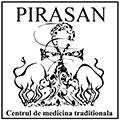Development of a malignant tumor in the thyroid disturbs the thyroid functions and generates hormonal disorders that will affect the body profoundly. The thyroid is situated in front of the trachea. By the thyroid hormones, it coordinates cardiac rate, artery tension, body temperature; activity of the basal metabolism and of the lipid metabolism; level of calcium in the body and metabolism of the osseous system; it contributes to the cerebral oxygenation processes and it is involved in muscle contractility. Therefore, deterioration of the thyroid activity will affect these functions, too, which will lead to the improper function of the controlled organs.
The thyroid cancer starts by local tumefactions. It has a slow development: years may elapse from its onset to the first manifestations. There is a higher incidence of malignant tumors in the patients suffering from goiter. Depending on the type of affected cell, the following types of thyroid cancer have been defined:
- papillary carcinoma (the most frequent form, affecting over 80% of the cases; the metastases are usually located in the area of the cervical ganglia; it is only rarely that they spread farther; this type of thyroid cancer has high healing chances);
- follicular carcinoma (it affects approximately 15-20% of the patients with thyroid cancer; the malignant process also affects remote organs; moreover it also has a vascular invasive character);
- medullary carcinoma of thyroid (the tumor develops from C-type, calcitonin-secreting cells of the thyroid gland, a form that is more common with women. It poses a higher risk of cervical metastases and also of metastases in other organs such as lungs and liver etc.).
- thyroid carcinoma (the most uncommon form of thyroid cancer; generally it occurs in third age persons. Most patients diagnosed with this type of thyroid cancer have cervical ganglia metastases when they are diagnosed.
- thyroid lymphoma or sarcoma are uncommon forms of thyroid cancer; they develop in a lymphatic ganglion located near thyroid
The malignant process may also occur where there is a chronic inflammation of the tonsils or of the thyroid.
The most frequent symptoms are: voice alterations (hoarseness, fatigue with speaking, loss of voice, tone alterations), inflammation of a lymph node in the throat, throat aches, dysphagia (difficulty in swallowing) or difficulty in breathing and coughing, nervousness, suffocation, a succession of anxiety and depression fits etc. Some of the metabolic disorders involve weight changes: loss or gain of weight within very short time. At cardiac level there can be noticed heart beat and heart rate changes.
Causes and Risk Factors
Statistics indicate a high rate in the persons with a diet low in iodine and in the persons with a genetic predisposition (Gardner syndrome, hereditary polyposis). Other risk factors are alcohol consumption, smoking, presence of thyroid nodules and goiter, exposure to radiations or therapeutic irradiation of the head or/and neck in the childhood. In particular situations, thyroid cancer occurs where there already are more tumors in other organs which grow malignant, spreading to other areas of the body.
By their presence, the benign nodules impair the normal development of the local metabolic processes; of the toxin and dead cell elimination processes. Accumulation of these toxins and cell residues will lead to a genetic mutation of the thyroid cells, which will trigger the malignant process.
Treatment
The traditional therapies that are part of the treatment arrest the neoplastic process, resorb the existing nodules, eliminate the local cancerous cells as well as those ones spread in the body, regenerate the areas of dysfunctional glandular tissue and restore an optimum thyroid activity. Where there are metastases, we also try to resorb the tumors developed in other organs: lungs, liver, osseous system etc. In order to attain these therapeutic objectives, we act upon the energy meridians by special techniques of Tibetan acupuncture and by administrating certain herb products with antitumoral, cell regenerating and antioxidant action; with action of tissular tonification and revitalization, of immune stimulation and of increasing the body resistance to environment pathogen factors (by stimulating the organs and the endocrine glands involved in the immune processes: thymus, liver, spleen, bone marrow etc.) The treatment also aims at diminishing the specific symptoms in order to improve the patient’s life quality.


